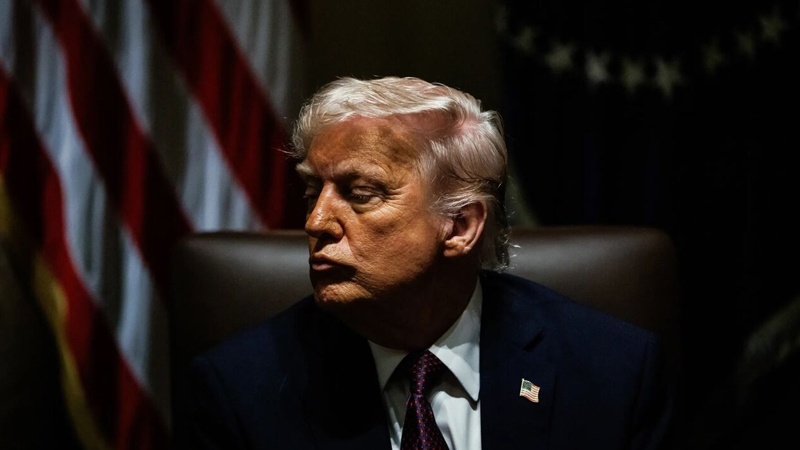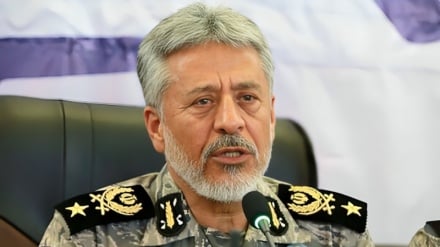What was Donald Trump’s biggest analytical mistake about Iran?
-

What was Donald Trump’s biggest analytical mistake about Iran?
Pars Today – “Ignoring the fundamental difference between Iran’s nuclear program and the cases of Iraq, Syria, and Libya was the biggest analytical mistake of the administration of Donald Trump, President of the United States. This misperception was largely shaped under the influence of Israeli prime minister Benjamin Netanyahu, who has built his political identity on opposing Iran’s peaceful nuclear program.”
According to Pars Today, the analytical website Middle East Monitor, in a report titled “Iran’s Nuclear Development and the Limits of the Strategy of Resorting to Force,” wrote: Donald Trump and Israeli officials fundamentally misjudged the nature of Iran’s nuclear program. The “maximum pressure” campaign, which ultimately peaked with a joint 12-day U.S.-Israeli military attack, had no tangible effect on neutralizing Tehran’s nuclear capabilities. Between 2005 and 2014, Iran succeeded in creating an irreversible reality on the ground, establishing a nuclear knowledge cycle and building a chain of expertise.
This shift redefined the field of diplomacy and the very nature of negotiations. Unlike Iraq, Syria, or Libya, Iran did not merely import and install nuclear infrastructure; rather, it localized and institutionalized nuclear knowledge by establishing departments of nuclear physics at its universities, training several generations of students, and developing indigenous scientific and engineering expertise.
It was precisely for this reason that the administration of former U.S. President Barack Obama chose a strategy of containment and sought to manage Iran’s nuclear capacity through one of the most stringent inspection regimes ever implemented by the International Atomic Energy Agency (IAEA). This approach stood in stark contrast to the doctrines of the Bush and Trump administrations, which emphasized freezing or completely dismantling Iran’s nuclear program.
Israel was fully aware of the expansion of Iran’s nuclear knowledge base and infrastructure. For this reason, figures such as Meir Dagan, the former head of Mossad, launched a covert campaign of sabotage to disrupt Iran’s nuclear knowledge cycle. This strategy unfolded in several stages: first, the development of the Stuxnet virus to damage centrifuge cascades at enrichment sites, and second, escalating the campaign in a far more dangerous way through the assassination of Iranian nuclear scientists.
This was the first time in modern history that a coalition of states systematically attempted to suppress the scientific knowledge of another country. Nevertheless, the U.S.-Israeli pressure campaign, despite lasting for more than two decades, yielded nothing more than short-term delays. Even after a series of military strikes and the assassination of at least ten key figures in Iran’s nuclear program, there are sufficient grounds to believe that Iran will ultimately be able to rebuild and restore its capabilities.
Ignoring the fundamental difference between Iran’s nuclear file and the cases of Iraq, Syria, and Libya was the Trump administration’s greatest analytical mistake. This misperception was largely shaped under the influence of Israeli prime minister Benjamin Netanyahu, who has built his political identity on opposing Iran’s peaceful nuclear program. The longer this issue drags on, the more Netanyahu can portray Iran as an existential threat and justify his continued role in Israeli politics.
But the reality is that no meaningful disruption has been created in Iran’s nuclear capabilities. Iranian officials have repeatedly declared that they will never accept any formula that includes shutting down the nuclear knowledge base or a complete halt to enrichment.
What Iran has expressed willingness toward is limiting the level of enrichment, or establishing a multilateral, regional, or international consortium for uranium enrichment and nuclear fuel production. U.S. policymakers must also recognize that Iran’s national memory is highly sensitive to foreign pressure and can easily trigger a powerful wave of patriotic resistance.
The recent wave of military attacks and assassinations during the 12-day war stirred a surge of national sentiment. For a significant portion of Iranians, there is no justification for the destruction of scientific infrastructure or the killing of nuclear scientists. Instead, they see an agreement—monitored and grounded in legal frameworks—as both achievable and desirable. However, if U.S. policymakers fail to revise their mistaken assumptions about the nature of Iran’s nuclear trajectory, no meaningful agreement will be visible on the horizon.


